BLOG
*** This page might not be translated. ***
![]()
2018-02-20 20:40
One of the characteristics of country life in Japan is a focus on annual religious events. For example, the Autumn festival for celebrating good harvests and some events wishing for good health.
Ever since I was a young child, I have participated in such events with other villagers of all ages, even though I did not understand the meaning of such events at that time.
One such event held at an old temple in my village is ' Nembutsu hajime' - the first day of praying to the Buddha in each new year. This old, small temple is associated with a larger temple in the district. We can discover similar small village temples throughout Japan.
My old village temple functioned as a school in the Edo period until Elementary schools were established in the Meiji period (late 19th century).
Until the middle of the 20th century, a priest lived at the temple and the temple was used by village elders and others as a village communication center but unfortunately, we cannot see such a sight nowadays.

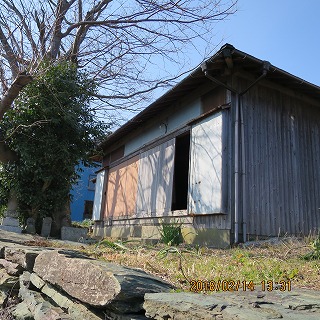
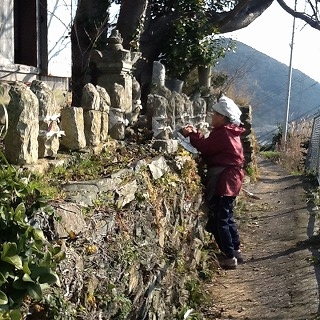
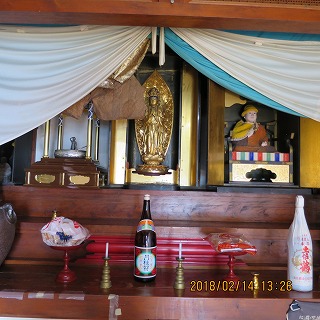
A villager places a cloth on the Jizo (a Buddhist stone statue) The main statue at the temple is Senju Kannon.
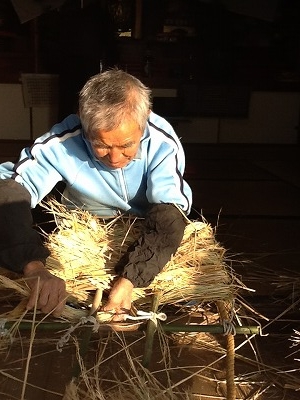
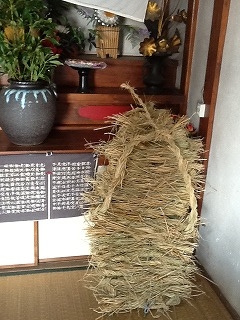
Make a huge straw sandal (Waraji)

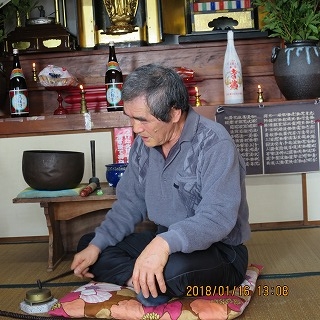


Playing to the Buddha
The day before Nembutal Hajime, villagers make a huge straw sandal (Waraji) and display the sandal at the village gate. This conveys the meaning that you should be careful not to do bad things as you cannot escape the big, big giant! Most villages in the area have Waraji on display near the village gate to ward off crime. These days villagers who can make Waraji or chanting are disappearing. In few years there will be no one left to carry out the events. It is an inevitable change, I suppose.
Ever since I was a young child, I have participated in such events with other villagers of all ages, even though I did not understand the meaning of such events at that time.
One such event held at an old temple in my village is ' Nembutsu hajime' - the first day of praying to the Buddha in each new year. This old, small temple is associated with a larger temple in the district. We can discover similar small village temples throughout Japan.
My old village temple functioned as a school in the Edo period until Elementary schools were established in the Meiji period (late 19th century).
Until the middle of the 20th century, a priest lived at the temple and the temple was used by village elders and others as a village communication center but unfortunately, we cannot see such a sight nowadays.




A villager places a cloth on the Jizo (a Buddhist stone statue) The main statue at the temple is Senju Kannon.


Make a huge straw sandal (Waraji)




Playing to the Buddha
The day before Nembutal Hajime, villagers make a huge straw sandal (Waraji) and display the sandal at the village gate. This conveys the meaning that you should be careful not to do bad things as you cannot escape the big, big giant! Most villages in the area have Waraji on display near the village gate to ward off crime. These days villagers who can make Waraji or chanting are disappearing. In few years there will be no one left to carry out the events. It is an inevitable change, I suppose.
![]()
2017-12-10 22:26
Mikan (Japanese tangerines) were first grown in Wakayama and now grow in Shizuoka, Kumamoto, Nagasaki and Ehime as well as other locations in Japan.
The mikan grown in Ehime are, I believe, of the highest quality and the best to be found in Japan.
It is thought that mikan grow best where there is sunshine, sea breezes and where they get reflected light and warmth from surrounding rocks. This creates the warm dry soil that the mikan enjoy.
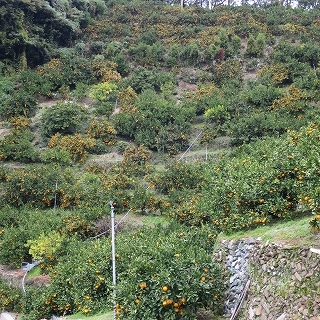
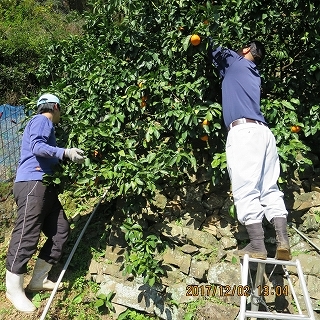

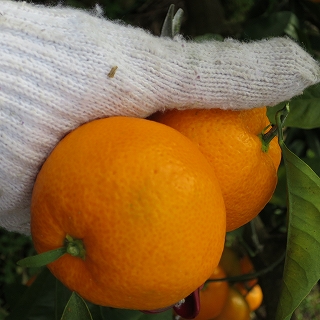
Cut stem two times not to damage the other mikans.

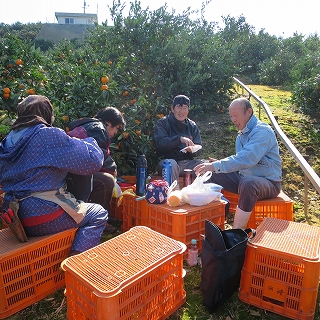
One of the most hard work is to deliver the harvest from the farm. Lunch on the farm.

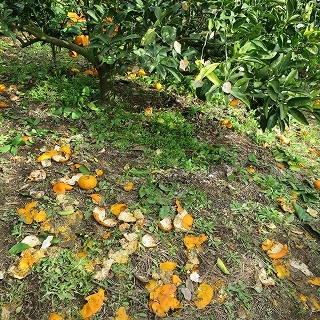

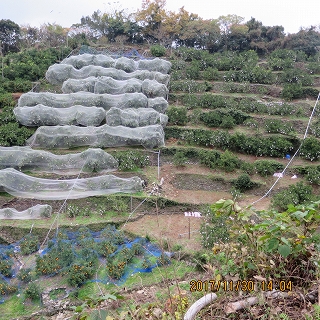
Magnificent view of Uwakai (the pacific ocean) from the farm. Damages by wild boar,
typhoon, and birds
The mikan grown in Ehime are, I believe, of the highest quality and the best to be found in Japan.
It is thought that mikan grow best where there is sunshine, sea breezes and where they get reflected light and warmth from surrounding rocks. This creates the warm dry soil that the mikan enjoy.




Cut stem two times not to damage the other mikans.


One of the most hard work is to deliver the harvest from the farm. Lunch on the farm.




Magnificent view of Uwakai (the pacific ocean) from the farm. Damages by wild boar,
typhoon, and birds
The farmer's work on Mikan farm throughout a year.
In January each year the trees are sprayed to protect them against insects and disease. This spraying is repeated at various times until just before the mikan are harvested in September. Old trees are cut down and removed to clear and tidy the orchard.
In June some of the mikan are picked and the trees are pruned to improve the size and quality of the remaining crop. The grass in the orchard is cut throughout the year to keep it tidy.
I have been working at my friends farm, where mikan are grown, for three years and would like to tell you about my time there.
A day in the life of a farmer’s wife during the harvest season:
5:00 am Get up and prepare food boxes for father-in-law’s breakfast and lunch.
6:30am Drive to the farm.
7:00-7:30am Start work on the farm.
10.00am Serve tea to the other farm workers.
4:00pm Finish work on the farm.
She then returns to the house to prepare dinner.
After this she will go to the warehouse where she will sort and pack the mikan.
9:00pm She will have dinner and a bath before washing clothes and any other housework.
1:00-2:00am She will be doing the accounts.
For the two months of the harvest season the farmer’s wife will only have three or four hours of sleep per night.

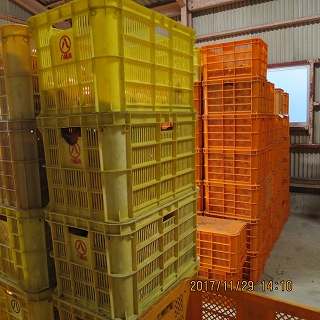
After work on the farm, work in the warehouse. Sort mikan needs the experience for long time.
The farmer knows how hard farm work is and thinks about their son being a farmer as he wouldn’t like to be a farmer again in his next life.
Mikan farms are now reducing in numbers and are going to waste. They are vulnerable to damage by wild boars and other animals as well as severe weather. This year much damage was caused by a typhoon.
I think any country in which farmers can’t make a reasonable living or are not supported by government to protect agriculture is not good and has no future. After all food is the source of human life.

















































